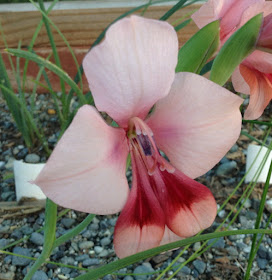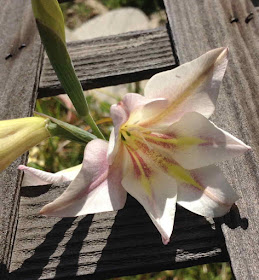But there's a whole other side to the genus: the winter-growing Glads of South Africa. Those plants are generally smaller than the hybrids you're used to, but are very colorful, and have a daintiness that you don't find in the summer-growers. Best of all from my perspective, they are durable, and dead simple to grow in a mediterranean climate.
I've been growing some of the species for years, and have dabbled in hybridizing them. These are my favorite results so far.
MM 00-00a. This was my first Gladiolus hybrid, a cross between a pale blue flower and a tomato red one. I love the mottled markings in the tepals, they're a bit like a watercolor painting.
MM 11-21f.
MM 11-22c.
MM 10-34.
For more info on these and other crosses, see:
New Gladiolus Hybrids, 2015
Gladiolus Hybrids, Pre-2015

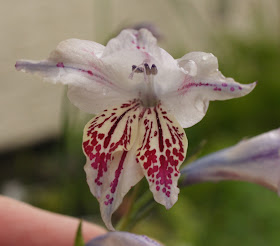

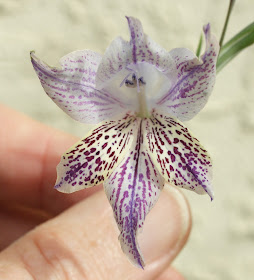
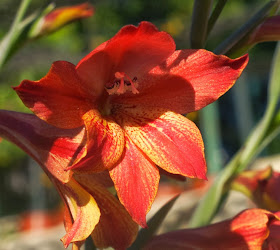
.JPG)
